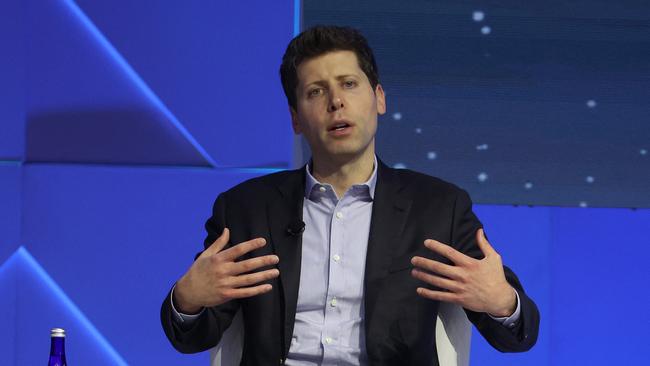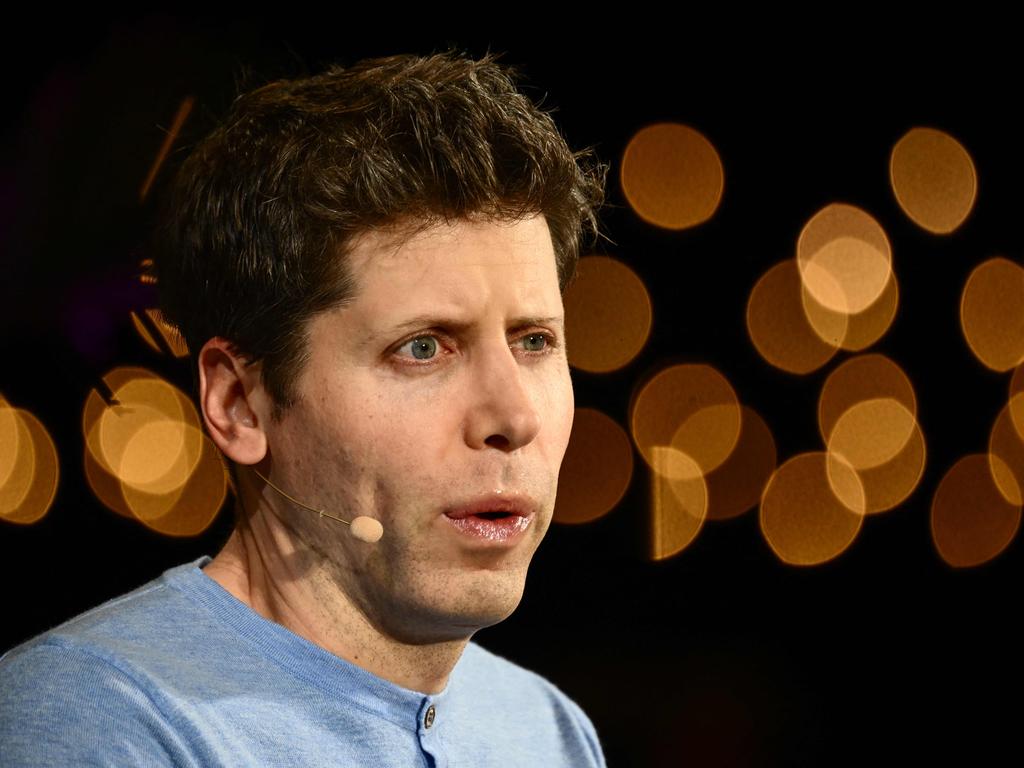OpenAI investors trying to get Sam Altman back as CEO
Co-founder of artificial-intelligence company behind ChatGPT was unexpectedly pushed out as CEO on Friday.

OpenAI’s investors are making efforts to bring back Sam Altman, the chief executive who was ousted Friday, said people familiar with the matter, the latest development in a fast-moving chain of events at the artificial-intelligence company behind ChatGPT.
Altman is considering returning but has told investors that if he does return, he wants a new board and governance structure, the people said. He has separately discussed starting a company that would bring on former OpenAI employees, including several that quit in protest of his ouster, the people said.
Altman is expected to decide between the two options as soon as this weekend, the people said. Leading shareholders in OpenAI, including Microsoft and venture firm Thrive Capital, are helping orchestrate the efforts to reinstate Altman. Microsoft invested $US13bn into OpenAI and is its primary financial backer. Thrive Capital is the second-largest shareholder in the company.
Other investors in the company are supportive of these efforts, the people said. The talks come as the company was thrown into chaos after OpenAI’s board abruptly decided to part ways with Altman, citing his alleged lack of candour in communications, and demoted its president and co-founder Greg Brockman, leading him to quit.
A spate of high-level researchers resigned, some of OpenAI’s corporate customers are looking for alternatives and a high-stakes financing with venture capitalists is now in jeopardy, people familiar with the matter said.
The exact reason for Altman’s firing remains unclear. But for weeks, tensions had boiled around the rapid expansion of OpenAI’s commercial offerings, which some board members felt violated the company’s initial charter to develop safe AI, according to people familiar with the matter.
Under Altman, OpenAI went from a small non-profit to a multibillion-dollar company at near-record speed, thanks in part to the launch of a for-profit arm that enabled it to raise billions from Microsoft.
The whiplash of the past 24 hours reflects the tension between the research non-profit Altman co-founded eight years ago, whose board just fired him, and the commercial arm that released ChatGPT a year ago, which became one of the most viral products in the history of technology.
Behind the turmoil is the odd governance structure that Altman helped create for OpenAI, which he often noted had the power to fire him.
Most tech founder CEOs own equity in their companies and report to a board filled with representatives of their investors to help ensure that decisions are made in the best interests of shareholders. Altman and his co-founders purposely created a structure in which neither of these things were true.
OpenAI was founded as a non-profit in 2015. Altman created a commercial arm for OpenAI four years later — shortly after he became chief executive — to allow the company to raise the billions of dollars it needed to fund the training of its AI models. However, that commercial arm was still governed by a non-profit parent.
The nearly $US30bn for-profit arm is 49 per cent-owned by Microsoft and includes a bevy of top venture capitalists as backers, who were promised a share of OpenAI’s profits. But none ultimately had any control over running the company.
Instead, OpenAI is governed by a non-profit board, only a minority of whom were allowed to have a financial stake in the company at any given time, according to the company’s bylaws. Altman himself had no equity in the company, further diminishing his influence with the board.
This allowed the board to essentially oust Altman without the consent of some of OpenAI’s largest investors and despite the fact that he delivered rapid financial success for the company and sent its valuation soaring.
His ouster came as a shock to OpenAI’s investors, employees and customers. Microsoft, Thrive and other investors were told of the news minutes before it was announced. Most employees and customers found out when the blog post was published Friday afternoon.
Altman was enraged by the board’s decision and complained to associates about not doing a better job managing its members and ensuring their allegiance, according to people who heard his remarks. He told friends last week it was ridiculous that the major shareholders had no say in the company’s governance, the people said.
In a separate note sent to employees Saturday morning, Chief Operating Officer Brad Lightcap appeared to temper the board’s tone, saying their decision wasn’t due to “malfeasance or anything related to our financial, business, safety, or security/privacy practices. This was a breakdown in communication between Sam and the board.”
Tom Dotan contributed to this article
The Wall Street Journal





To join the conversation, please log in. Don't have an account? Register
Join the conversation, you are commenting as Logout